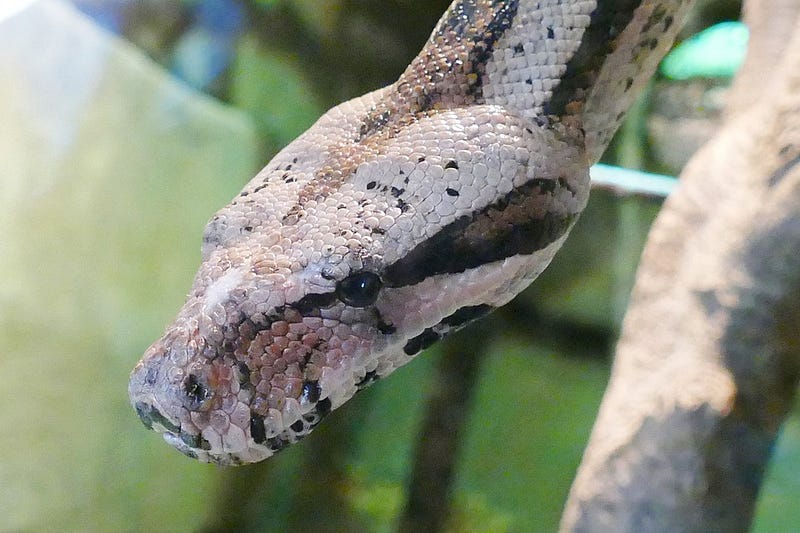The Biting Truth About Venomous Snakes
By Binh Dang, Ecology and Evolutionary Biology, 2022

When I tell someone I spent a summer catching snakes for research, I often get one of two reactions: an exclamation of fascination or an audible gasp and look of horror. Usually it’s the latter. The typical question that follows after both is “Are they poisonous/venomous?” This question is the first indicator of misconceptions about snakes. Often, people ask if a snake is poisonous when they actually mean venomous. The difference lies in how the toxin is delivered; poisonous animals release their toxins if they’re ingested or touched — think poison dart frog or pufferfish. Venomous animals release their toxins via biting or stinging; this includes bees, sea jellies and, of course, some snakes. However, there is one known species of snake that’s both venomous and poisonous: the Asian tiger snake, a venomous snake that builds a reserve of poison from preying on poisonous toads.
Even if you know the difference between poisonous and venomous, there are still misconceptions about venomous snakes. Plenty of sources cite ways to identify venomous snakes — common identifiers include: triangular heads, a certain coloration or pattern, or facial pits. While some of these features apply to certain species or families of venomous snakes, there are countless exceptions. However, there is some truth to these heuristics.
Triangular heads are almost always an indicator of venomous snakes. Typically, these wider heads host venom glands on the sides of the snake’s head. The Viperidae family of snakes — which includes rattlesnakes, copperheads, and cottonmouths — is known for this distinctive head shape. Nearly all venomous snakes in North America are pit vipers, so this is a good indicator of danger in the region.
This characteristic is less helpful in other parts of the world. For instance, the Elapidae family of snakes, which contains cobras, mambas, and coral snakes, does not have triangular heads and includes some of the most venomous snakes in the world. The inland taipan of Australia has a fairly smooth transition between head and body with no prominent side protrusions and is considered the most venomous snake in the world; a single bite has enough venom to kill 100 full-grown adults. Conversely, some subspecies of garter snakes have triangular heads but are non-venomous.
Plenty of sources cite ways to identify venomous snakes — common identifiers include: triangular heads, a certain coloration or pattern, or facial pits. While some of these features apply to certain species or families of venomous snakes, there are countless exceptions.
Garter snakes aren’t the only non-venomous species that have evolved to mimic the telltale signs of venomous snakes. Many non-venomous snake species practice this form of mimicry, Batesian mimicry, in which a harmless species resembles a dangerous one by copying their behavior or appearance. A well-known example of Batesian mimicry in the animal kingdom is the case of the coral snake (the other type of venomous snake in North America) and the scarlet snake. Both have a distinct red, black, and yellow band pattern, but the coral snake is highly venomous while the scarlet snake isn’t. Even if you could distinguish between those two species, both the scarlet kingsnake and the milk snake also mimic the coral snake, yet neither are venomous.
There are a plethora of other alleged identifiers of venomous snakes, including the aforementioned facial pits — used for infrared sensing and thermoregulation, elliptical pupils, or a single row of ventral tail scales. Unsurprisingly, these characteristics are true in some, even most, cases. However, equally unsurprisingly, there are a multitude of exceptions that invalidate them as perfect indicators.
Snake physiology is incredibly diverse, despite all of them filling the same serpentine form. Across families and species, there are plenty of varied and conserved traits. From a cobra’s hood to a hognose snake’s pointed nose to a rattlesnake’s tail, snakes have unique characteristics that make them as hard to categorize as they are to catch. If you ever find yourself in the wild and come across an unidentified serpent, look out for the common identifiers, but don’t assume you’re safe if you can’t recognize the species. The only way to identify a venomous snake with absolute certainty is to familiarize yourself with the native and invasive snakes in your area. However, the single best advice for encountering a snake is the same as with any wild animal: let it be.
Biota Neotropica (2012). DOI: 10.1590/S1676–06032012000300031
